Dawson City’s Enclave of Power
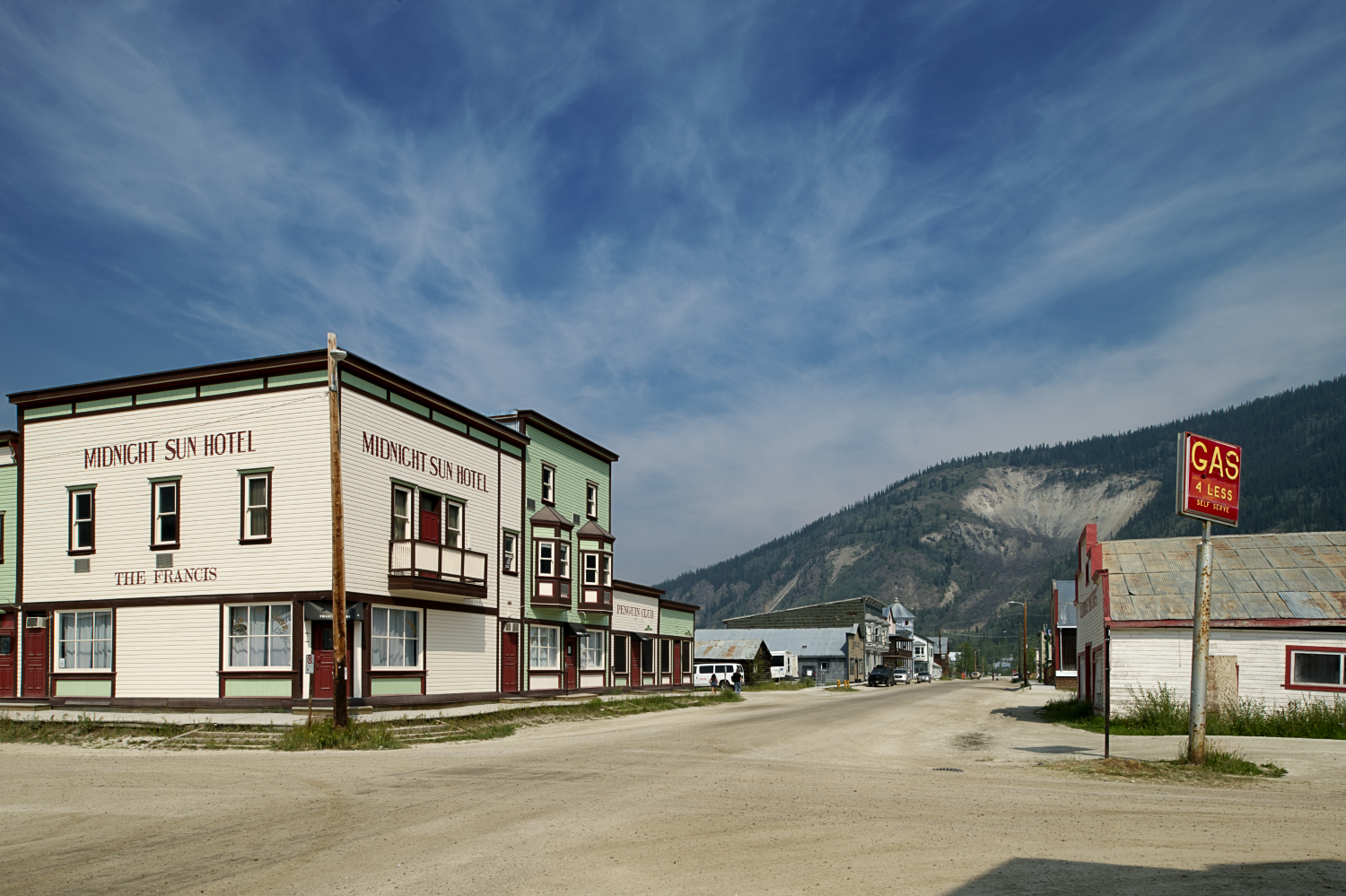
By Peter Coffman
If I say “Dawson City”, you may think “Gold Rush! Canada’s wild west! The land of Sam McGee and Dan McGrew!”
That’s the beloved mythology of Dawson City, but in fact the wild west, gold rush period of the town’s history was very brief – barely three years long. This blog is about a slightly more staid Dawson that starts to take hold around 1900. A Dawson that could almost be called – brace yourself – a government town.
By the end of the nineteenth century, gold mining around Dawson was already changing. The low-hanging fruit – that is, the gold that could be scooped out of the riverbed by men with pans – had pretty much been picked. There was still plenty of gold, but extracting it required more machinery and more infrastructure. Exit the rugged, individualistic, self-reliant prospectors; enter the big, deep-pocketed corporations. The Klondike Gold Rush had changed from being an adventure to being an industry.
Clearly, it was time for the Canadian government to get involved. At least, that’s how the government saw it. Initially, the only federal presence had been the North-West Mounted Police (NWMP), who attempted to enforce the laws of the land on a town that would otherwise have been happy to take those laws into its own hands. But Ottawa wanted a more proactive role. Not only were there laws to be enforced. There were royalties to be collected – lots of them. There was the need to assert Canadian sovereignty in a town largely occupied by Americans. There was investment to be attracted – investment that might think twice about an apparently improvised, transient city with no infrastructure or government services. Moreover, there was a scandal to quell – a scandal of government corruption and incompetence, which had come to international attention thanks to a correspondent from the London Times (read all about it in of Charlotte Grey’s excellent book Gold Diggers).
So, officialdom moved in, which meant of course that they had to have a place to move into. Several sites were considered, but in the end the Department of Public works chose the ‘Government Reserve’ (which had been set aside for government use in 1896) – an area in the south-west part of the city where the NWMP were already stationed in Fort Herchmer.
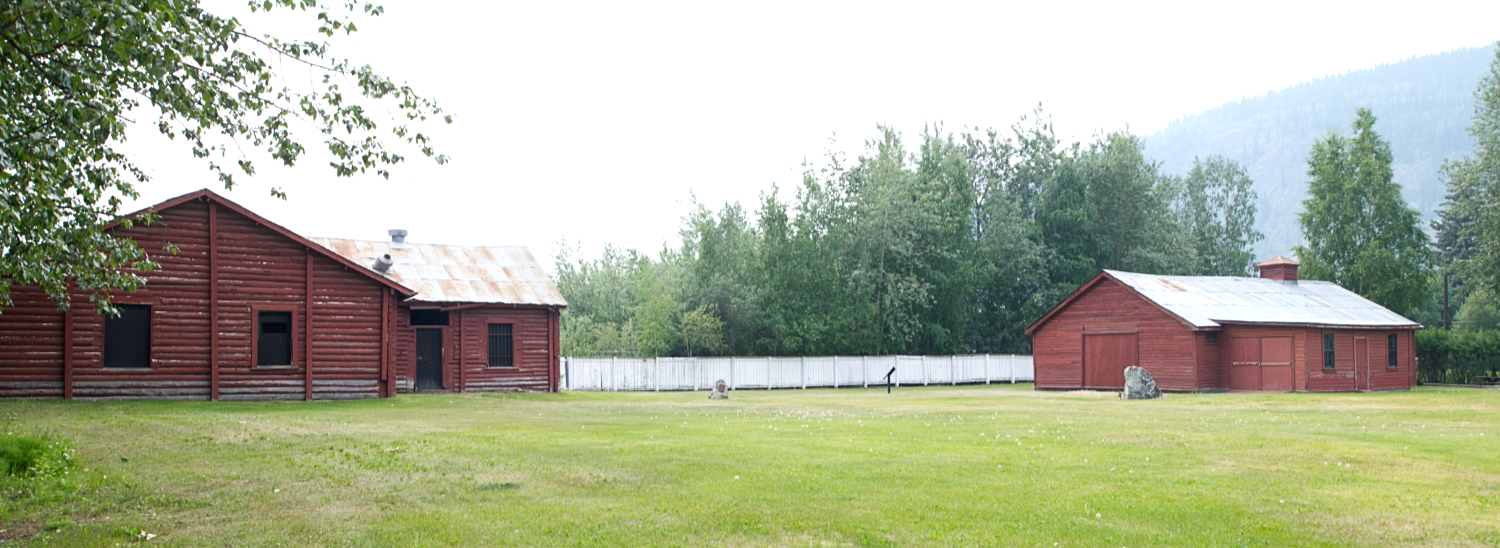
An ensemble of government buildings (and one important non-government building) sprang up around Fort Herchmer, creating an enclave of power and authority in this young, remote (from Ottawa, at least) frontier town. Here is where they were located:
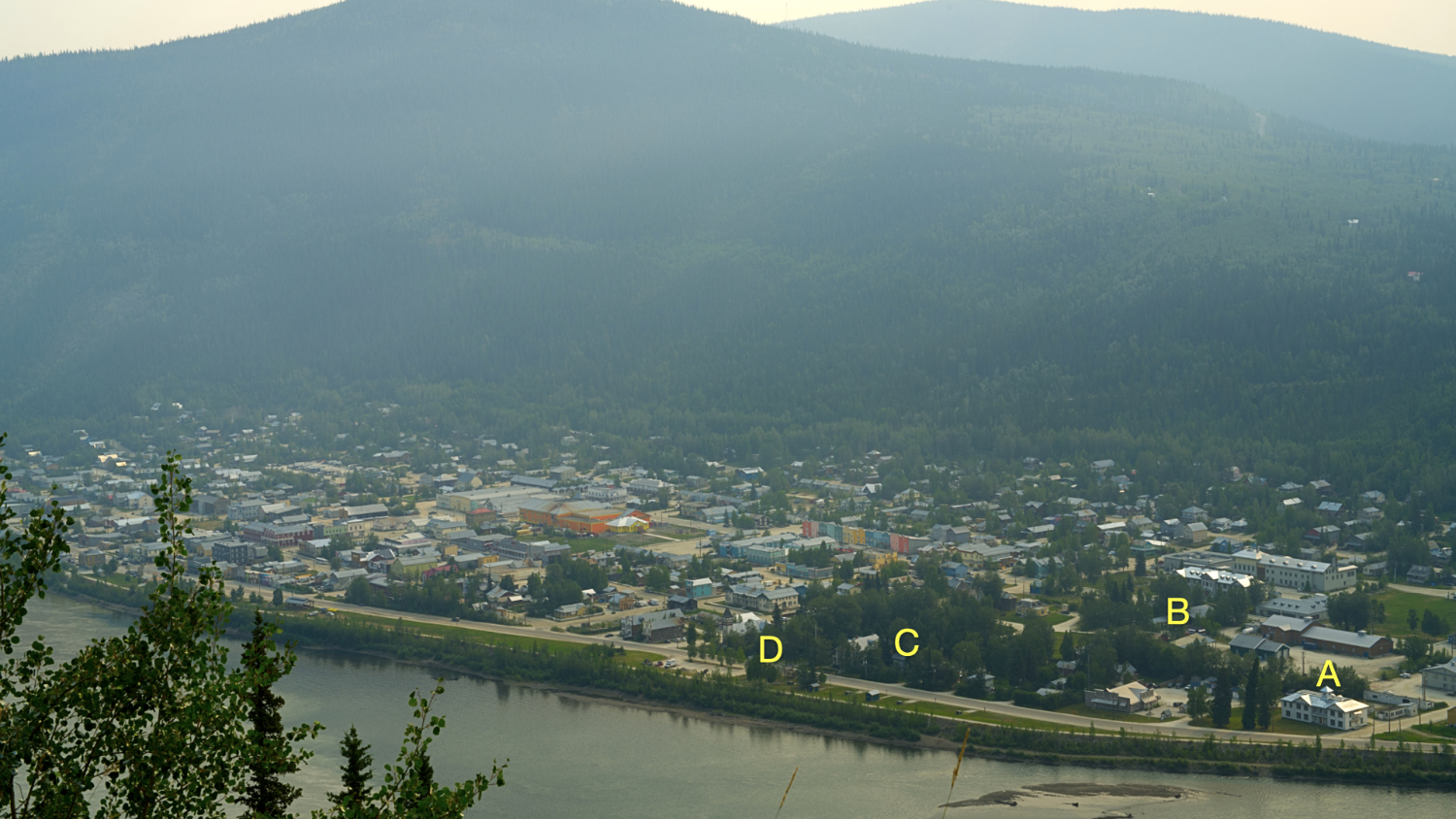
These new buildings were all designed by the same architect: Thomas W. Fuller, who had been sent to Dawson from Ottawa by the Department of Public Works. When it comes to official Ottawa architecture, he had impeccable credentials. His father, also named Thomas Fuller, had been Canada’s Dominion Architect, designer of the original Centre Block on Parliament Hill, and of several memorable post offices across the country. His job was to stamp the federal presence on communities from coast to coast, and that’s essentially what his son was told to do in Dawson.
I’ve labelled the buildings above in the order in which they were built. Lets’ have a brief look at each one:
A: Court House, 1900-01
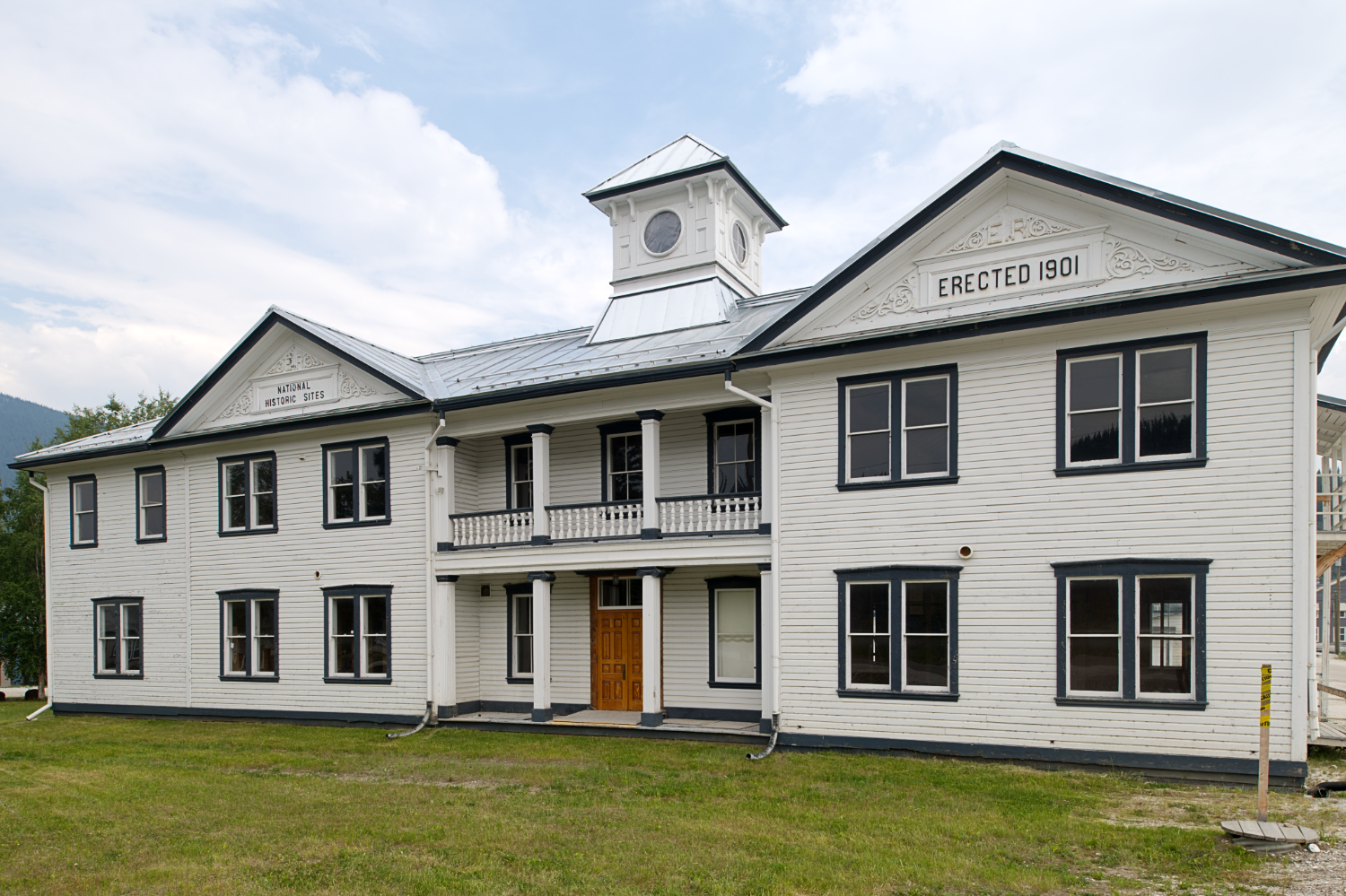
Fuller’s court house was the first large building that would have come into view for anyone approaching Dawson City by river from Whitehorse – which is to say, almost everybody coming to Dawson. Could there be a clearer, more explicit statement that law, order, and the federal government had arrived and were here to stay?
B: Territorial Administration Building, 1901
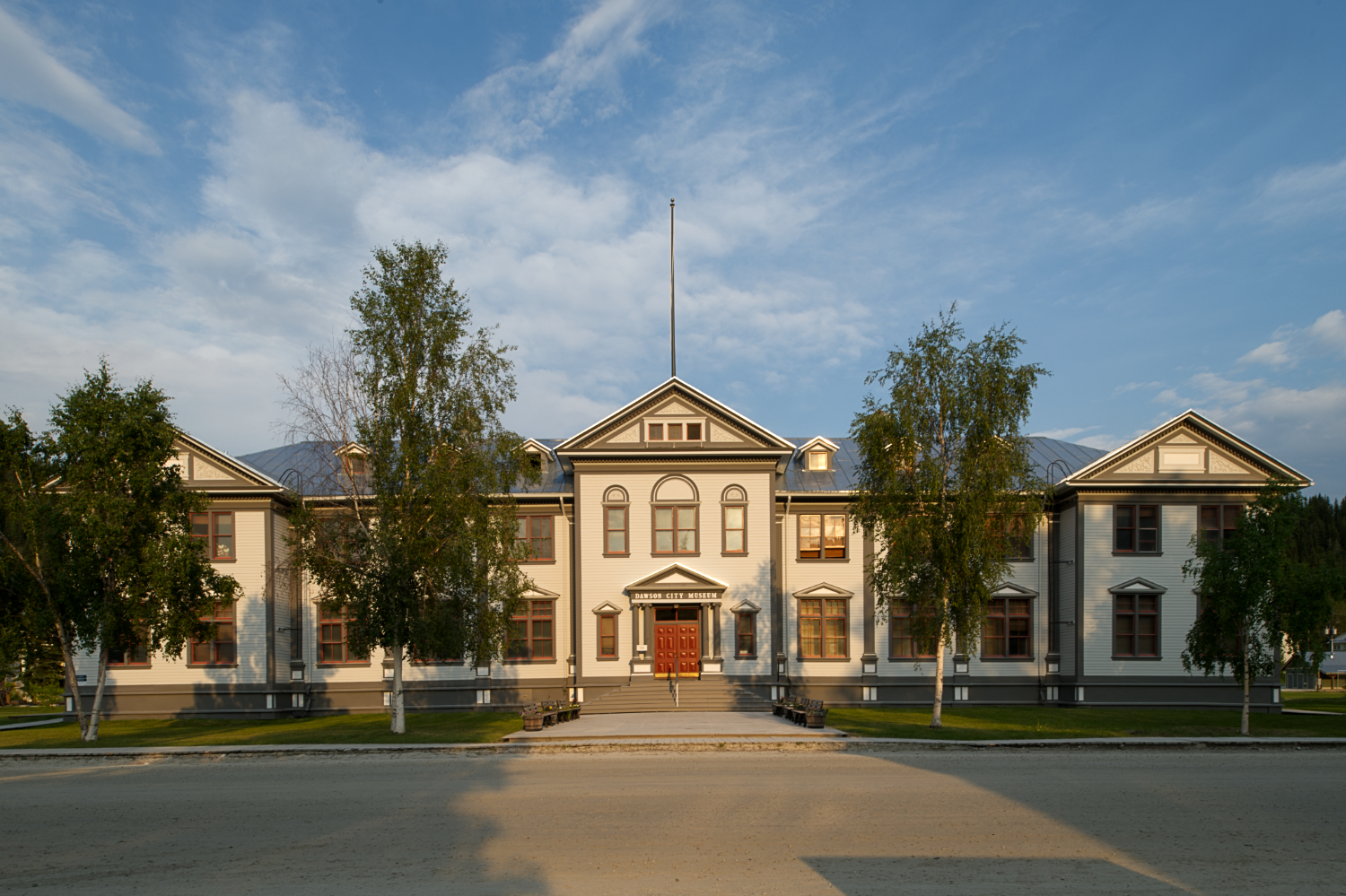
Yukon had been made a territory in 1898, but until Fuller’s Administration Building was opened in 1901, government work was spread across various sheds and cabins around town. Inadequate working space was identified as one of the reasons for ineffectual (and sometimes corrupt) government practices. Fuller’s building was meant to solve that problem, and to show the world that it had been solved. It now serves as the Dawson City Museum.
C: Commissioner’s Residence, 1901
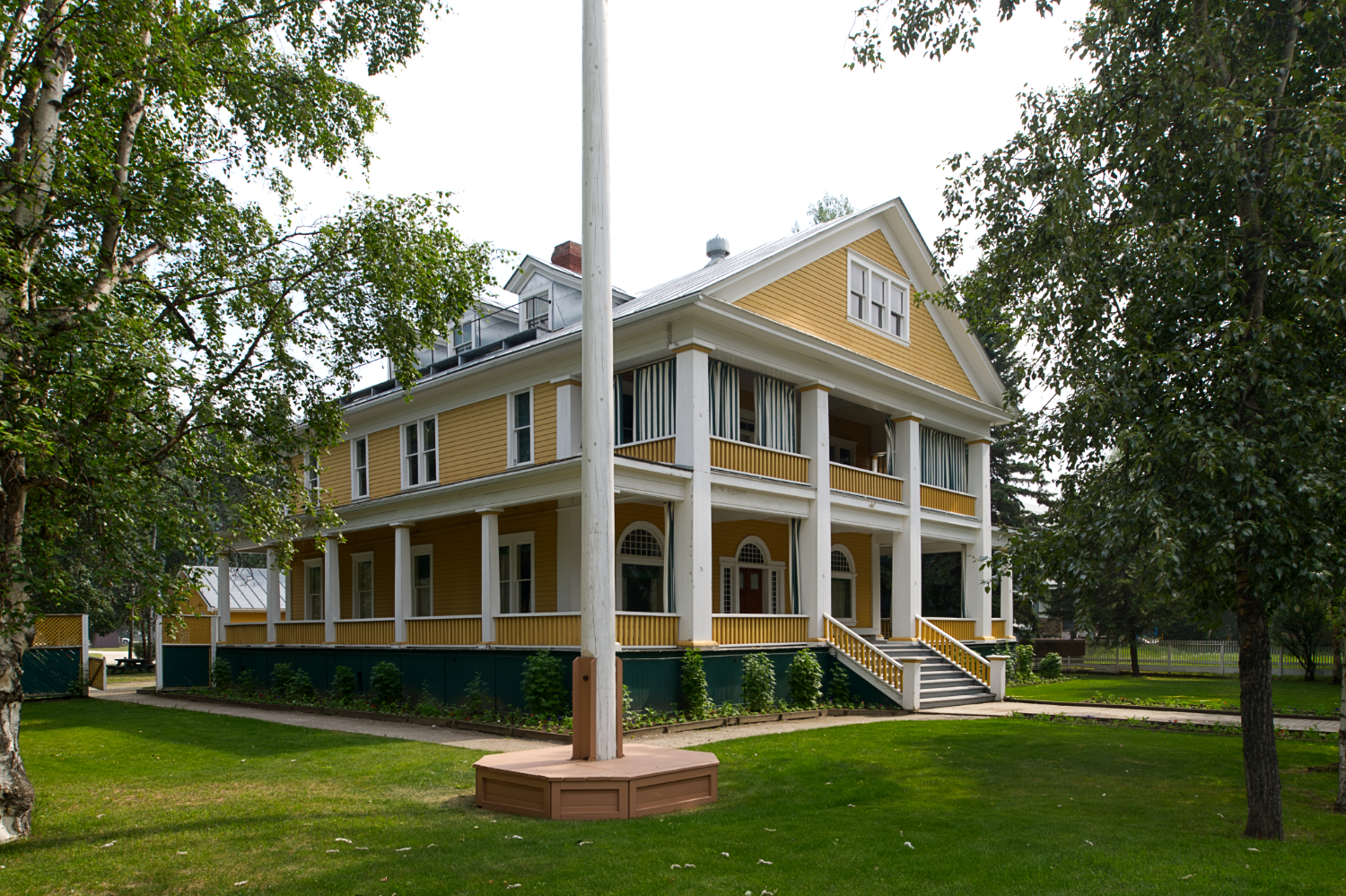
The Commissioner was, politically speaking, the Big Cheese of the Yukon. Appointed by Ottawa, he governed in consultation with a council (originally appointed, later elected), but his control over the territory was sweeping. This house (now a bit less ornate in its exterior decoration than originally), reflected the power and prestige of the office. Incidentally, “he” is currently “she” – The Honourable Adeline Webber, whose role is analogous to that of a provincial Lieutenant-Governor.
D: St. Paul’s Anglican Church, 1902

This is an outlier in that it is not a government building, but I think it needs to be considered part of the ensemble. It was designed by the same architect and built at the same time as the other buildings, within the grounds of the Government Reserve. And although Dawson (and Canada) had people of many faiths, none were tied to the Mother Country (as Anglo-Canadians still regarded England 120 years ago), its identity, and its sense of empire and destiny like the Anglican Church. Colonial Canada already had a long history of planting Anglican church buildings where power was centred; see Halifax’s Parade Square and Lunenburg’s Civic Square for early examples.
By the time these buildings were built, the population of Dawson City was already declining. In fact, when St. Paul’s opened its doors, Dawson had about one third the number of people it had had at its peak five years earlier. But the town wasn’t (yet) in worrying decline. Thanks to investment, huge amounts of money still flowed into (and out of) Dawson. The population was smaller, but less transient. It appeared to be on the way to becoming a stable, almost mainstream Canadian town. These buildings reflect that vision.
This ensemble of buildings symbolized a new Dawson, one under firm federal control, in which the rule of law was to prevail. The concentration of power and authority in one section of town was – and had been for centuries – a typical colonial strategy. This enclave of power also brings into sharp focus the yawning gulf between the practices and world views of settler society and those who had occupied this land for millennia – the Tr’ondek Hwech’in people. That will be the subject of an upcoming blog.
During my recent sabbatical, I gathered material from across the country for a new course we’ll be offering on Canadian architecture. I’ll be using this blog to think out loud about some of the places I visited and the issues they raise.
Peter Coffman
peter.coffman@carleton.ca
@TweetsCoffman
@petercoffman.bsky.social
Further Reading:
Charlotte Grey, Gold Diggers: Striking it Rich in the Klondike, Berkeley, Harpercollins, 2010.
Emily Turner, “An Architecture of Sophistication in the Klondike Gold Rush – St. Paul’s Anglican Church, Dawson”, Journal of the Society for the Study of Architecture in Canada, downloadable here.
Margaret E. Archibald, A Structural History of the Administration Building, Dawson, Yukon Territory, Parks Canada Department of Indian and Northern Affairs, Manuscript Report Series 217, 1977.